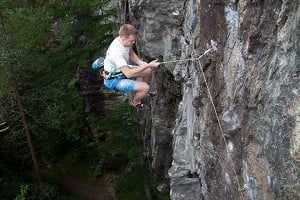
In this comparison review, the UKC team has looked at 6 different lightweight sport climbing ropes from different manufacturers.
I remember back in 2008 I was in Lofoten with Mark Glaister for 2 weeks. We had done a fair share of the classic trad routes and wanted a day on the sport crag of Eggum. Of course, we only had double 9mm ropes with us so we climbed on these. Now anyone who is used to sport climbing on a single rope knows that double rope sport climbing is a right pain. It didn't take us long to reject the double ropes and push on with a single 9mm rope which obviously wasn't rated for single rope use (since we were not working any routes and mostly just lowering off this didn't seem too alarming although it is not recommended). What I noticed though was how great it was climbing with a lightweight 9mm rope - the clipping action was easy, the rope drag less, the knot was tidy and the rope felt really nice and supple.
Roll on 4 years and suddenly lightweight single ropes are all the rage. They also seem to come in some amazingly thin diametres like 8.9mm! So we decided to have a look at the current range and see how they perform - do they feel as good as the 9mm I used in Eggum?
Why would you want a lightweight rope?
The simple answer to this is that a lightweight rope means you have less to haul up a route. If your tenuous red-point ascent requires small margins for success then a few grams less on the rope might make all the difference, and if your are about to be charged extra by Ryan Air for your haul baggage then it can even save you a bit of money. Having said that the difference in weight between a standard rope and a lightweight one is only around 6 g/m to 10 g/m which means a fairly insignificant 150g to 300g on a 30m pitch, and 300g to 600g on your airport baggage weight, which is very marginal. However, as with my experience in Lofoten, there are other less tangible benefits of lightweight ropes that make the climbing more fun and the rope less of an intrusion.
Why wouldn't you want a lightweight rope?
What the rope gains in lightness and touch, it generally loses in durability - there is less rope so it is bound to wear out more quickly. Having said that in our testing we found that most of the ropes appeared to be surprisingly durable albeit for the 6 months we had them. Another factor is that lightweight ropes tend to be fairly expensive.
The Testing
The ropes were sent to us in May 2012 and have been used by various members of the UKClimbing team since then. This included two trips where the ropes were present together so that we could contrast and compare them all. We assessed them as single ropes only despite the fact that some were triple-rated (rated for single, double and twin use).
What we tested:
Handling
How a rope handles is probably the most vital aspect of a lightweight rope, after all, if you aren't bothered about handling then why buy a lightweight rope? We looked at the following characteristics:
- How does the rope feel? Is it soft or hard?
- How supple were the ropes and how did this impact the clipping action?
- How did the rope perform in the event of a fall? This was difficult to get a comparison though due to falls all being different.
- What sort of knot did the ropes tie - a nice tight and tidy one, or something a little stiffer that needed a more concerted pull to tighten it up?
- How did the rope weight feel at the top of a pitch? Was there lots of drag or did it live up to its lightness?
Belay devices
A thin rope means less grip in any belay device - the Gri-gri 2 was specifically designed to be used with lightweight ropes since the old Gri-gri wasn't rated for diametres less than 9.7mm. We tested the ropes with a variety of single-rope belay devices including assisted-braking devices like the Gri-gri 2, the Edelrid Eddy and the Climbing Technology Click-up; and other conventional belay devices.
Longevity
Longevity is much harder to test since the ropes are still relatively new and they haven't all been used to the same degree. What we have been able to assess is an appraisal of how hard-wearing they feel, whether they stiffen up a lot as they get dirty and chalky, whether the sheath is showing signs of abrasion.
Packaging
Ropes are usually sold factory-coiled up and need to be carefully uncoiled (flaked out) before they are used for the first time to avoid them becoming a twisted mess (useful video here). These days some manufacturers do this process for you by supplying properly twin-loop-coiled ropes that don't have twists in them. Also, some ropes come with usable rope-bags, others with less usable rope-bags, and others with no bag at all. We looked at all these aspects.
Colour and Middle mark
The colour of a rope in itself isn't particularly important - some like a nice bright one, others prefer understated colours. What is vital for sport climbing ropes is a clearly defined middle mark that remains clearly defined for as long as possible. This is so that you know when you can lower-off safely, when you might be close to the end of the rope, and when you don't have enough rope left to reach the ground.
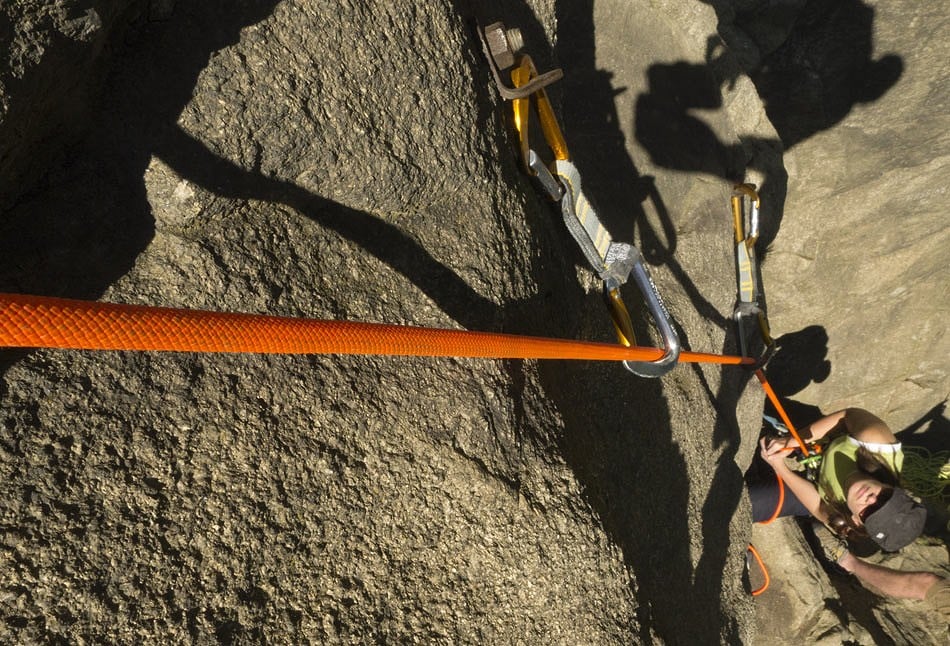
What we didn't look at:
Manufacturer specifications - Weight/metre
All the ropes came with claimed figures for weight/metre, fall rating and impact force. We checked the weight/metre figure by accurately measuring the rope length and then weighing it and we found that we got a different figure to the claimed one for all the ropes. After contacting the manufacturers we realised that this is because of very stringent requirements on how these figures are arrived at which makes it almost impossible to reproduce accurately, so we disregarded our own measurements for this figure. It should be added that, in our measurements, the ropes tested showed no major discrepancies relative to each other in what was claimed.
Manufacturer specifications - Rope Length
It is customary for rope manufacturers to include a little extra rope, so a 60m rope will usually be a little more than 60m. We found that all the ropes we were sent measured a little long, which most people won't find a problem. One was spot on the claimed length and one other was 5m longer than the claimed length. Again, not really a problem unless you happen to be a victim of the following scenario:
You own a 60m rope that is really 65m but you don't know that. You climb a route and just get down to the ground when lowering. Someone else turns up and wants to do the same route and you tell them that a 60m rope is long enough. They lower off and end up 5m short - ouch!
Perhaps some standardisation in official extra rope length is called for? (Remember - always tie a knot in the end of your rope when lowering!)
Manufactures specifications - Diametre
The claimed diametres ranged from 8.9mm to 9.3mm. Again, these are measured under certain conditions so we didn't attempt to make our own accurate measurements. Softer ropes tended to look a little wider, but they became thinner when loaded. The stiffer ropes deformed less.
Rope Treatments
Most of the ropes use special treatments to improve the rope's handling and longevity. These days the manufacturers mostly have their own special treatments which claim similar benefits but they are far from standard hence fair comparison is not possible.
Summary Table of Manufacturer Specifications
|
Reviewed Ropes
|
Diametre
|
Type
|
Impact Force (Single)
|
Manufacturer weight/metre
|
Number of UIAA Falls
|
Price for a 60m
|
|
9.2mm
|
Single
|
8.6 kN
|
56 g/m
|
5
|
£180
|
|
|
9.4mm
|
Single
|
8.8 kN
|
59 g/m
|
6
|
£170
|
|
|
9.2mm
|
Single
|
9.3 kN
|
55 g/m
|
5-6
|
£185
|
|
|
9.2mm
|
Triple
|
8.4 kN
|
53 g/m
|
6
|
£175
|
|
|
8.9mm
|
Triple
|
8.7 kN
|
52 g/m
|
5
|
£200
|
|
|
9.1mm
|
Triple
|
8.2 kN
|
53 g/m
|
5
|
£165
|
Beal Joker 9.1mm
The rope arrived factory-coiled and comes with a roomy and usable rope bag. We actually received a black rope which didn't have a middle-mark but I am assured that the normal colours available are anis-green and orange which do have middle-marks. The black we used is now discontinued.
The Joker has quite a thick and solid feel for its diametre giving you the impression that it is fatter than its stated 9.1mm. Despite this, it handles well with a reasonably smooth clipping feel. It creates a decent small knot without being ultra compact. It is a triple-rated rope (rated for single, double and twin use) which makes it appealing as a one-rope suits all solution.
During the testing the rope was used for sport climbing in France, the Peak and Spain, plus numerous sessions as single rope on gritstone trad. It took several falls while sport climbing. It didn't give the softest of catches but was certainly adequate. On a few routes it was used for basic working before a red-point and performed well for this since it's more-substantial feel gave more reassurance.
For belaying the Joker works well with all the main devices giving a reliable grip despite its diametre.
The abrasion of the gritstone and French granite did take their toll on the rope but was up to the job. Some slight fraying but nothing more than would be expected for the use it had. The middle mark wasn't present on our black test version so we can't comment on how durable it is on the current colour range of anis-green and orange.
Summary - A more substantial rope that feels fatter than it is. It doesn't give the lightness of touch that many might expect from a lightweight single but does appear to be more resilient so could be an option for those who want a more lightweight rope that can be used for sport and trad owing to its triple-rated status.
Revelation Mammut 9.2mm
The Revelation 9.2 is a single rope for 2012 but it will be triple-rated in 2013. It arrived in a correctly looped coil making it easy to unpack. It didn't come with a free rope bag but did have a middle mark.
This was certainly the most substantial of the ropes we had on review. It really did feel like a 10mm but had the specifications of a much thinner rope which meant that it didn't handle and feel as light as the others. The clipping action was solid but not very supple.
It was used primarily for sport climbing in France, Kalymnos and Spain. Some falls were taken and the catch again felt more like a 10mm rope - solid but not very elastic. It handles well enough with the belay devices we tried.
Where this rope lost out on feel and touch, it gained on durability. Mammut ropes are renowned as being hard wearing and this certainly fits that bill since it looked pretty much as new 6 months into use.
Summary - The most solid-feeling of the ropes we tried. Ideal for those after a lightweight rope with the handling and durability of a 10mm work-horse. It could also be a good choice for those who want a lightweight rope but need the mental reassurance that they have something a little more substantial tied into their harness. It will be triple-rated in 2013.
Additional Notes on Mammut Revelation - Duncan Campbell - After the review team had finished with these ropes I was given this one by Alan as it was a spare rope he didn't need. After reading through this review I felt that the Revelation wasn't represented as well as it could have been throughout the short space of this review. I have recently returned from a 10 week climbing trip to America, during which I used the Revelation virtually everyday, mainly on granite, which is a very unforgiving rock type for ropes. I felt that the handling and light weight of this rope were very good, yet it easily took all the abuse I put it through over those 10 weeks and still has a lot of life left in it.
I used it both as a single and as a half rope, and found whilst it is useable as a half, it felt a little heavy in comparison to other triple rated ropes I have used. However, these have often felt alarmingly skinny when used as a single and would not be able to handle 10 weeks of use as a single without looking significantly more tired than the Revelation. All in all, I think this is a great, hardwearing, yet light single rope and will certainly be looking to get a longer one for European sport climbing trips.
Edelrid Kite 9.2mm
The Edelrid Kite 9.2 was an exceptionally slick and thin rope for the first couple of months of use. This gave advantages in that it reduced rope drag, and was easy to pay out, but perhaps due to the slippy nature of the coating, the rope had to be used with caution, even in assisted devices such as a Petzl Gri-Gri 2. In fact it was so slick that any belayer who was not familiar with the rope was given an extra warning at the start of the climbing day.
After a couple of months of use the rope had bedded in nicely and was a joy to use, being both supple, easy to use and also very responsive in the belay plate. Lots of falls were taken, and the rope performed well. After 6 months of use it is now showing classic signs of wear close to the ends, but on the whole has been an excellent rope with no serious wear issues.
The green colour has been slowly replaced with a good old dirty black, as the rope has been used, but the black middle mark (a double black stripe) has remained visible and usable. The rope is supplied loop-coiled secured with two tensile bands and a cardboard wrap. No rope bag was included.
Summary - The Edelrid Kite is a good thin and light rope for those wanting to climb long routes or push their grade. The handling was at first too slick and not recomended for novice users or people belaying a much heavier climber.
Tendon Master 8.9mm
The thinnest of all the ropes on trial and also a triple-rated rope (rated for single, double and twin use). It arrived factory-coiled and with a small storage bag which wasn't usable as a rope bag.
The Master 8.9mm had a very light feel, almost wire-like. Although only 0.2 or 0.3mm thinner than most of the other ropes, it felt significantly thinner than most of them. It has an incredibly light feel and is beautifully easy to clip.
The rope was used for sport climbing in France, Spain, the Peak District and trad climbing in the Peak and North Wales. It took a few sport falls and gave a soft catch with a reasonable amount of stretch. For belaying it was fine with all the main devices although you do need to be very careful to stay within specifications since some devices aren't rated for diametres of less than 9mm.
Despite its lightness, the rope appeared to stand up to the job showing little signs of wear and tear after a summer of reasonably heavy use.
Summary - An excellent rope which combines a very lightweight feel with a decent amount of durability. It does feels like you are climbing on a half rope, which might not suit everyone, but handles well as a single rope giving you the best of both worlds (if your head can take it). This was probably the stand-out performer of the set and as a triple-rated rope, it can also double-up as a one-purchase solution for all your rope requirements but, at £200, it is quite expensive.
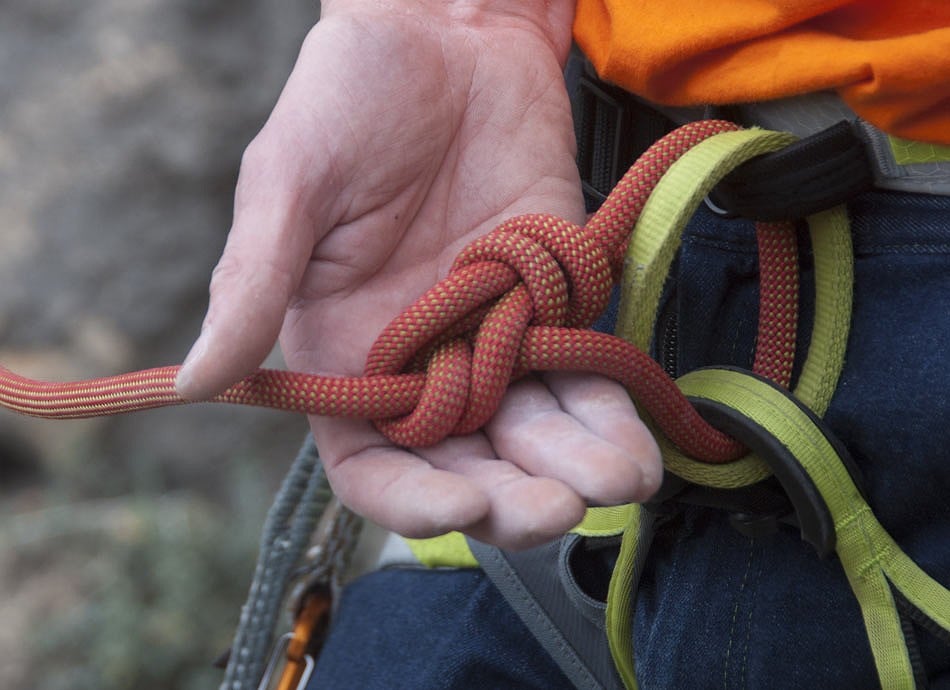
DMM New Breed 9.4mm
This is in DMM's Pro range of ropes which have been designed to handle high levels of use. It is supplied shrink-wrapped for protection and factory-coiled requiring it to be properly flaked out prior to use.
The rope was used for sport climbing in France and the Peak District and lots of trad climbing in the Peak District. There was no problem with belaying using the Gri-gri 2, traditional bugs or the Click-Up. The rope did become dirty quite quickly and it is unclear why this happened but most likely it was from use of an old and tarnished belay device. The rope responded well to a session with some Beal rope cleaner though and there was no visible damage to the sheath other than slight discolouration in places.
Even though this is the thickest rope on test here, it still felt very soft and is easy to clip with thanks to DMM's Pro-dry treatment. Its use with the Click-Up was noticeably smoother than an old 10mm single in comparison.
The mid-point is clearly marked with dye (see the photo right) so should easily stay visible for the lifetime of the rope.
Summary - After a season of concerted use this rope still feels great and should stand up to plenty of abuse. It'll be ideal for those looking for a lightweight single for trad and sport routes that gives great handling while offering added reassurance of a more substantial rope.
Sterling Nano 9.2mm
This is the second Sterling Nano 9.2mm rope that I have owned and its technical characteristics have not changed since I reviewed the rope for UKC in this article last year. However this purchase was made with a new colour in mind - a vivid block orange, not a choice for those who are looking for understatement or subtlety. At 80m this Nano was procured with continental sport climbing in mind, its minimal weight being good for both carrying to and from the crag as well as keeping the weight and volume of hold luggage down for the plane journey.
The rope was supplied in a plastic bag and factory-coiled. The solid colour of the rope contrasts well with the thick black middle mark of the Nano making its passing easy to spot as well as when looking out for it on the ground when attempting to see 'how far is it to the halfway' mark.
The Nano handles extremely well being a relatively stiff line coupled with what I can only describe as a cloth like textured sheath, which allows the rope to be easily held and clipped whilst still retaining the smoothest of passage through karabiners and belay devices. The Nano knots easily but does seem to pick–up dirt on the sheath more quickly than other ropes I have used, although this has done little to dull, the vivid orange or purple colour that I had previously. The older of the two Nano's that I have owned is still in regular use and shows no more wear than my experience of ropes would suggest, being still easily handled, coiled and with no signs of severe wear on the sheath. The ropes have both held a good number falls and have provided a softish take and have not slipped or run in any of the belay devices.
The Nano is rated for use not only as a single rope but is triple rated being OK for use as a double or twin line, which could be handy if need be on the odd Trad route where a separate set of double ropes is not really necessary.
Summary - The Nano has proved to be an excellent lightweight sport rope that is both hard-wearing and possess superb handling characteristics.
General Summary
We tested 6 ropes and, to be honest, they were all pretty good. This wasn't such a surprise though since rope technology has come on so far in recent years and the manufacturer that makes a bad rope is unlikely to get very far.
The ropes dropped into 2 fairly distinct styles. On one hand we had the ropes like the Tendon Master, the Sterling Nano and the Edelrid Kite that gave performance like a previous generation 9mm half-rope that had been engineered to fulfil the specs of a single. These are the ones to consider if you are a confident climber after a rope that you can virtually ignore and concentrate on your climbing. On the other hand we had the Mammut Revelation, the Beal Joker and the DMM New Breed that seemed as if they had approached the problem from the other side by making thin versions of their thicker 10mm single ropes. Go for this category if you are the sort of person who feels your knot before a run-out and likes to use the reassurance of the rope to boost your confidence before a hard move but still wants the performance of a lightweight rope. As a third buying option, if you want to buy just one rope to fulfil all their climbing needs - sport, trad, twin, single and double - then consider one the triple-rated options - Tendon Master, Beal Joker and Sterling Nano currently, with the Mammut Revelation being added to this list in 2013.
Price-wise they are all quite expensive but shop around a bit since many are available on better deals than the RRPs. Also, always consider buying the longest rope you can afford; one of the golden rules of sport climbing is that you never regret buying a longer rope so go for a 70m or an 80m if you can afford it.

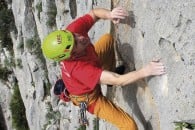

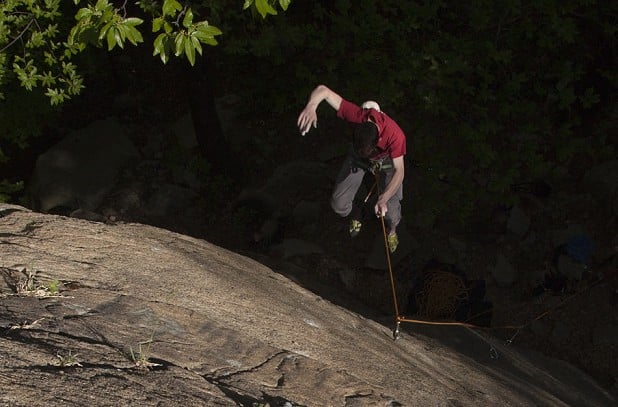

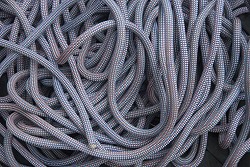
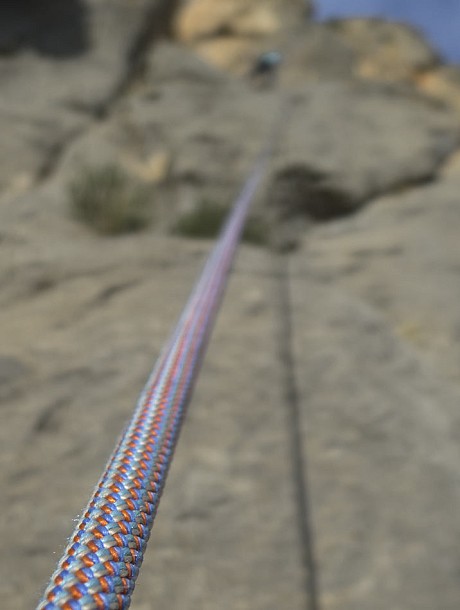
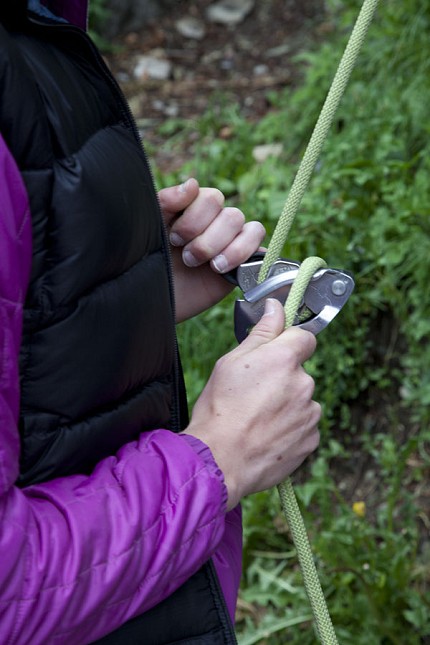
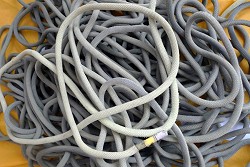
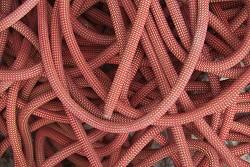
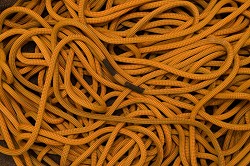
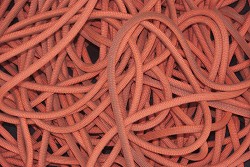
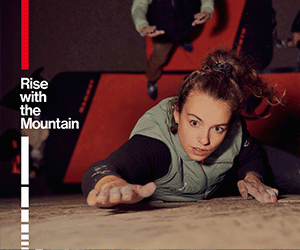
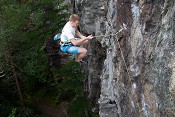


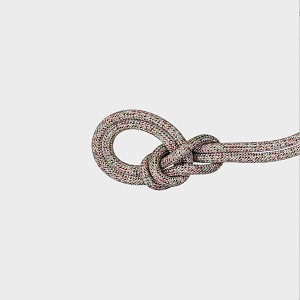
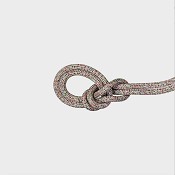
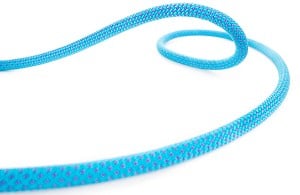
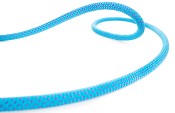
Comments